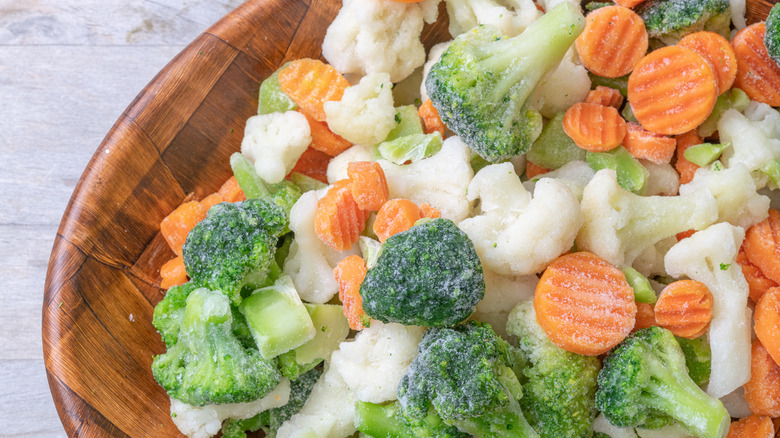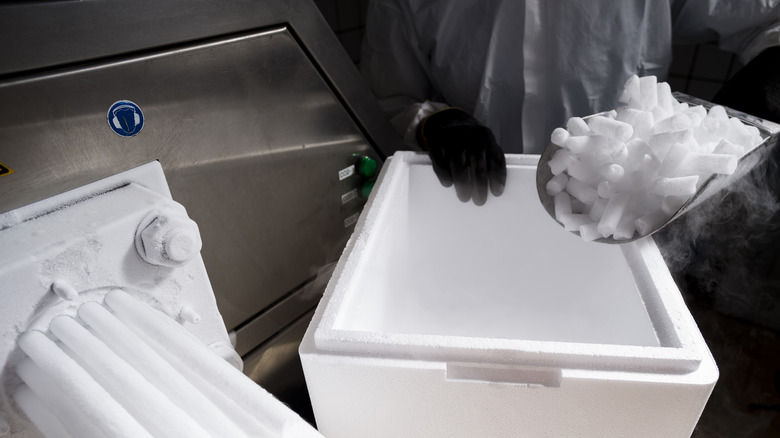Dry Ice Is The Secret For Higher-Quality Frozen Produce
Freezing produce is a very convenient option for storing your fruits and veggies long-term, letting you prep them quickly when needed. But nothing compares to biting into a ripe, fresh fruit, or a perfectly crispy roasted vegetable — things you normally can't replicate with defrosted produce. Thankfully, there is a way to split the difference and keep produce frozen and fresh-tasting at the same time. Enter dry ice.
While it's easy to think of dry ice in the context of science experiments or special effects, it has many practical applications you'll wish you'd heard of sooner. With a temperature of -109 degrees, dry ice is much colder compared to the zero-degree temp of most household freezers. This means you can place your produce in a cooler full of dry ice, and it will be frozen solid in about an hour. Its original freshness will be better preserved, so you can either thaw and enjoy your produce raw or have it in perfect condition for any cooking method.
Using dry ice also helps to prevent freezer burn — an important thing to know how to spot in your food. It's caused by the moisture present in regular freezers, and dry ice circumvents this pitfall. Flash-freezing can be the solution to all your frozen produce woes, so consider thinking outside the ice box and give dry ice a go.
How to use dry ice to flash-freeze produce
It is possible to put dry ice in your freezer, but preserving produce is best done in a cooler. Multiple blocks of dry ice can last for about three days in a large styrofoam cooler, but in many cases, the ice will melt sooner. You will have to restock it rather frequently if you intend to keep the produce for an extended period — therefore, many guides recommend flash-freezing your items with dry ice before storing them in your regular freezer. Either way, you don't have to worry about when your ice will go bad, because dry ice doesn't stale; it simply melts quickly if not insulated.
When it comes to freezing your produce, make sure that your items are dry above all else — again, we don't want freezer burn from excess moisture. Dump a layer of dry ice at the bottom of your cooler before laying your produce on a baking sheet and placing it on top of the ice. Your food should not come into direct contact with the ice for safety, and avoid letting it touch your bare skin throughout the freezing process.
Finally, cover your cooler loosely to make sure there is some ventilation. Airtight containers can lock in gas buildup from the dry ice, causing your cooler to explode. With that, just let your items freeze solid and move them to your freezer. No more wondering when to defrost frozen vegetables for the best results, as dry ice will always create a crisp and fresh texture.


